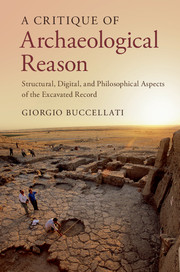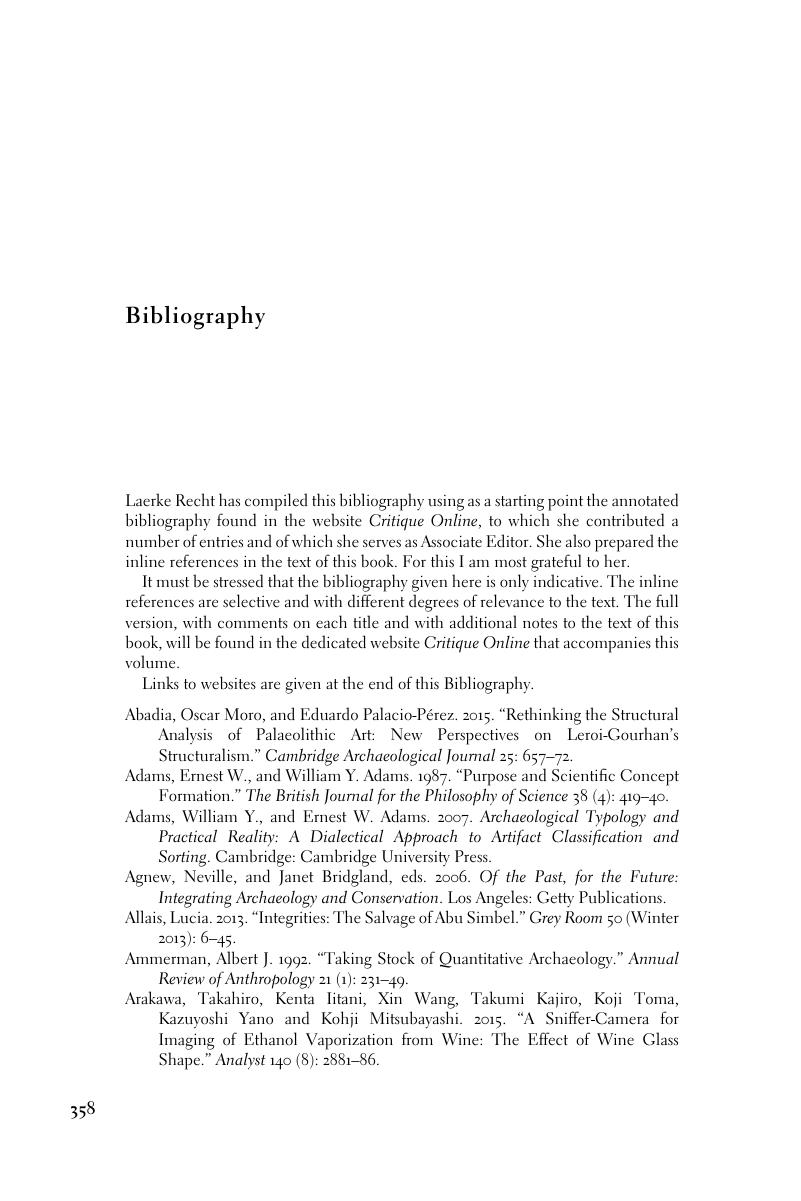 A Critique of Archaeological Reason
A Critique of Archaeological Reason Bibliography
Published online by Cambridge University Press: 18 May 2017
Summary

- Type
- Chapter
- Information
- A Critique of Archaeological ReasonStructural, Digital, and Philosophical Aspects of the Excavated Record, pp. 358 - 375Publisher: Cambridge University PressPrint publication year: 2017
References
Bibliography
Laerke Recht has compiled this bibliography using as a starting point the annotated bibliography found in the website Critique Online, to which she contributed a number of entries and of which she serves as Associate Editor. She also prepared the inline references in the text of this book. For this I am most grateful to her.
It must be stressed that the bibliography given here is only indicative. The inline references are selective and with different degrees of relevance to the text. The full version, with comments on each title and with additional notes to the text of this book, will be found in the dedicated website Critique Online that accompanies this volume.
Links to websites are given at the end of this Bibliography.
Critique Online: www.critique-of-AR.net.
Grammar: www.urkesh.org/h/grammar.htm.
Grotte Chauvet: http://archeologie.culture.fr/chauvet/en.
Stanford Encyclopedia of Philosophy: http://stanford.library.usyd.edu.au/archives/.
Urkesh Website: www.urkesh.org.
Global Record and Urkesh Global Record refer to the pertinent section within the Urkesh Website.
W3C Semantic Web: www.w3.org/2001/sw/wiki/OWL.
all sites last accessed on January 19, 2017


